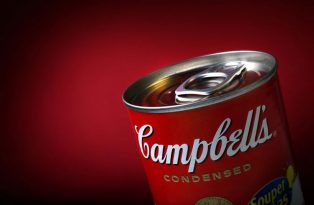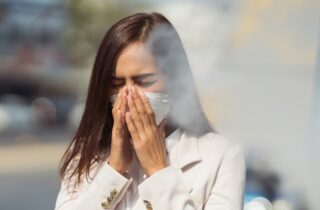Plastics
At a Glance
Many people encounter toxic, cancer-causing chemicals through plastics, whether they’re aware of the health risks or not.
Plastic can harm our health at every stage of its lifecycle. For example, PVC or polyvinyl chloride, a type of plastic, is made with vinyl chloride, a known human carcinogen.
Plastics can harm our health
Plastics can harm our health at every stage of their lifecycle – from extraction of petrochemicals, to production, transport, use, and disposal. Plastics are an environmental justice issue, an intrinsic part of the climate crisis, and a source of toxic pollution. Many people encounter toxic, cancer-causing chemicals through plastics, whether they know the health risks or not.
For example, plastic PVC (polyvinyl chloride) is a type of plastic made with vinyl chloride, a carcinogen. PVC is commonly used in packaging like bottle cap liners, safety seals, and labels on PET bottles. PVC is also found in clothes, furniture, gift cards, toys, sports equipment, medical devices, packaging, and building materials. Over the course of its life, PVC exposes us all to highly toxic chemicals, many of which are linked to an increased risk of breast cancer.
When the Norfolk Southern train derailed in East Palestine, Ohio, on Feb. 3, 2023, to avoid an explosion, an estimated 1.1 million pounds of highly toxic vinyl chloride was drained from the rail cars into a ditch and burned, creating an enormous plume of toxic smoke. Unfortunately, when PVC is burned, it makes another extremely potent class of carcinogens – dioxins, which are breast carcinogens. Recently released data shows that the soil in East Palestine contains dioxins hundreds of times above the level the EPA found to pose a risk for cancer.
Plastic production is growing
Plastic products, plastic waste, and plastic pollution surround us. Yet, the massive production of plastic keeps growing at a staggering pace. Without significant action to eliminate non-essential uses, global plastic consumption could triple by 2060. While the issue of plastic waste is familiar to most of us, the health harms of this avalanche of fossil fuel-based material are less well-known.
Plastics lifecycle toxic exposures
While we use many plastics for a very short time, sometimes just seconds or minutes (e.g., plastic coffee stirrers or straws), that plastic represents an entire lifecycle of creating toxic exposures for workers, communities, consumers, and the planet.
Fossil fuel extraction
Fossil fuels, or petrochemicals, form the base ingredients for most plastic produced today. Oil and gas operations, such as drilling, pumping, and hydraulic fracturing, release numerous toxic air contaminants, including benzene, toluene, ethylbenzene, and xylene, all of which have been linked to increased risk of breast cancer and many other adverse health outcomes.
Oil refining
Living close to an oil refinery is associated with breast, bladder, colon, lung, lymphoma, and prostate cancers.
Plastic manufacturing
The production of polyvinyl chloride or PVC includes several steps that involve the use of numerous highly toxic chemicals, including deadly chlorine gas and breast carcinogens ethylene dichloride and vinyl chloride, as well as filters made of the carcinogen asbestos or the highly toxic and persistent PFAS (per- and poly-fluoroalkyl substances, also known as Forever Chemicals). In addition, sometimes harmful chemicals like PFAS are used as manufacturing aids, such as mold-releasing agents, during the production process, later contaminating products that go into our bodies and the environment.
Base ingredients, additives, contaminants, and non-intentionally added substances
Aside from the base chemical ingredients used to make the plastic polymer from which the products and packaging are created, additional chemicals are also present in and released from plastics:
Plastic additives
A wide array of chemicals are added to plastics to provide specific functions or attributes. Examples include anti-static agents, colorants, curing and foaming agents, flame retardants, heat stabilizers, lubricants, and processing aids such as plasticizers, preservatives, mold releasers, and UV stabilizers.
PVC additives
PVC, for instance, often includes endocrine-disrupting phthalates to make the material flexible. Other potential additives include heavy metals (cadmium, lead) added for stability, UV filters, and flame retardants. Unfortunately, workers and communities are exposed when these chemicals are produced and added during plastic manufacturing.
Plastic contaminants
Contaminants are chemicals that may have originally come from a manufacturing aid used in the production process, like a lubricant or mold releaser, that were not intended to be present in the final product. Contaminants can also originate from environmental contamination of a constituent ingredient.
Non–intentionally added substances (NIAS)
Non–intentionally added substances (NIAS) are chemicals that result from reactions between multiple chemicals or by-products of the chemical mixture when the plastic is being made.
Plastic transportation
Transporting plastic creates toxic exposures such as truck diesel fumes. As the train derailment in Ohio demonstrated with such devasting clarity, communities are also at risk for potential spills and accidents. The extent of the environmental and health disaster created by the vinyl chloride and other chemicals released and burned in East Palestine will not truly be known for years.
Plastic use
Plastic containers, packaging, and other plastic products can leach chemicals into food and beverage, personal care and beauty products, cleaning products, etc. The additives can be released during storage and while the product is used, particularly as the packaging or the product gets worn or stressed.
Plastic disposal
As we create massive amounts of plastic waste, there is no responsible and feasible way to dispose of this material. Incineration releases highly carcinogenic and persistent dioxins. Landfills release vinyl chloride and other toxic chemicals into the water through leachate and into the air through off-gassing and burning. As a result, a staggering volume of plastics is released directly into the environment. It takes the form of litter (e.g., plastic beverage bottles) and tiny fragments called microplastics. Microplastics carry, pick up, and deliver toxic chemicals to the organisms that ingest them, including people.
Recycling
Recycling is often presented as one of the primary answers to the plastic waste crisis. However, only about 5% of plastic is recycled in the U.S., and less than 10% worldwide. Recycling will never solve the enormity of the waste crisis. It doesn’t address the toxic footprint of plastic throughout the entire lifecycle nor deal with the danger of re-circulating toxic chemicals from the original plastics into the recycled plastic material.
The real solution is to turn the tap off on all non-essential uses of plastics and develop and swiftly deploy non-toxic reusables, compostables, and products that are not only recyclable but (actually) recycled.
Microplastics
Microplastics are fragments of plastic waste that measure less than 5 mm long and come in various shapes, including beads, pellets, fibers, and fragments. Due to their small size, they are easily dispersed and have been found everywhere, from the highest mountains to the deepest sea trenches. In addition, microplastics are small enough to exist undetected in our food, air, and water, meaning they can easily be inhaled or digested. As a result, they have been found in human blood, breast milk, placenta, and stool. (Despite the presence of microplastics and other contaminants in breast milk, the benefits of breast milk outweigh the risks for babies if breastfeeding is possible.)
Exposure to microplastics can lead to biological changes, including oxidative stress, inflammation, and the accumulation of microplastics in organs. Additionally, because plastics contain toxic chemicals and accumulate toxic compounds from the environment on their surface, there is increasing concern over the potential transmission of additional toxic substances into the body of the organism or human that has ingested or absorbed the microplastic.
A recent report entitled Microplastics Occurrence, Health Effects, and Mitigation Policies, produced by the California State Policy Evidence Consortium, reviewed the health effects of microplastics and found that they are suspected to be a hazard to human digestive, reproductive, and respiratory systems. The report concluded: “Despite gaps in the available evidence, the precautionary principle suggests that California consider advancing policies that limit microplastic exposure.”
Forever chemicals: PFAS in plastics
There is mounting concern about the presence of PFAS in and leaching from certain plastic containers into the packaged contents. PFAS may be used as mold-releasing agents in the plastic manufacturing process or can be generated by a process called “fluorination,” whereby plastic containers are treated with fluorine gas which creates a substantial amount of PFAS that can then wash off the container into the contents or the environment after disposal.
PFAS has been found in liquid products and traced back to fluorinated plastic containers. One example was EPA testing in 2021 that found fluorinated high-density polyethylene (HDPE) containers used for storing and transporting a mosquito control pesticide contained PFAS compounds leaching into the pesticide. Another example is a recent academic study that found PFAS leached into foods (olive oil, ketchup, and mayonnaise) contained in fluorinated HDPE containers. In addition, industry marketing materials suggest that the fluorination of various types of plastic containers is happening across the packaging sector.
Solutions to the plastics problem
We must put a stop to all non-essential uses of plastics and switch to non-toxic reusables, compostables, and products that are not only recyclable but (actually) recycled.
Reducing Toxics in Packaging Act: California AB 2761
A new California bill, Reducing Toxics in Packaging: AB 2761 (Hart), would remove two very toxic chemical groups and forms of plastic from packaging sold or distributed in the state. About the bill
- Footnotes coming soon
Types: Article, Fact Sheet




